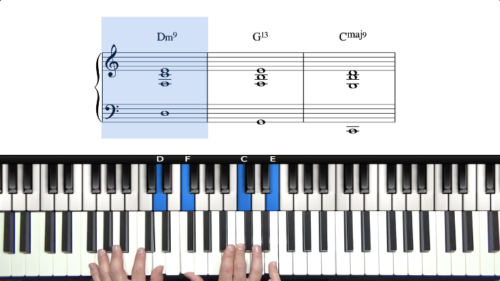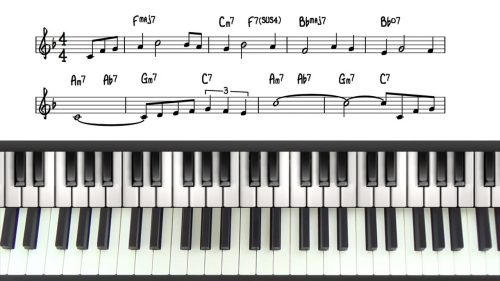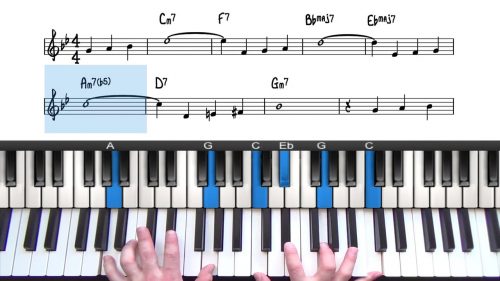Altered Harmony Practice Series
Welcome to this practice series on Altered Harmony & Upper Structure Triads.
This 1 hour practice plan is split into 2 sections. The first 30 minutes contains 6 theory drills, and the second 30 minutes should be spent playing through jazz standards and manually working out upper structures using the upper structure cheat sheet.
Visualising Alterations In All 12 Keys
The drills and exercises covered in this practice plan will help you to visualise alterations and upper structures, and also help with our aural recognition of the alterations.
Each alteration has a very distinct harmonic flavour and gradually we gain an appreciation for this.
For the first 2 slots we are going isolate single alterations over the major 25 and major 251 progression. This will give us an appreciation for the unique colour of these alterations.
For the 3rd slot we introduce the minor 251 and explore the b9, #9, and #5 or b13. For slots 4 and 5, we take the 4 common upper structures around all 12 keys.
For slot 6 we explore some more advanced applications of upper structures over the minor 251 progression.
Altered Chord Drills: b9s & #5s
In this lesson we will be exploring the major 251s with b9 and #5/b13 alterations. We’re going to continue from where we left off in the extended voicings course where we played the ii-9 moving to V13 moving to 1maj9. Check out the related lessons below if this is new to you.
Lesson Downloads
-
Upper Structure Triad Cheat Sheet File Type: pdf
-
Altered Harmony Practice Planner File Type: pdf
Practice Tips
-
When starting out with altered harmony, print the UST cheat sheet and stick it close to the piano for quick and easy reference.
-
When we come across a dominant chord in a jazz standard, if one of the tones is the melody note, we can apply an upper structure voicing to achieve interesting harmonic colours and textures.
-
Once we have the 4 formulas memorised, we can always find an interesting voicing that works with both the melody and the underlying harmony.
-
The goal of the drills in this lesson is to get accustomed to the colour and texture of the b9, and the #5/b13.
- Play these 251 progressions with 2-handed voicings and also with left hand voicings. It’s important that we can visualise the alterations in both hands.






Thank you!! I love how u broke the whole complicated jazz concept into bite-size lesson. It makes it much easier for beginners like me to get more organised and motivated to practice. I get how 5# and 13b is harmonically equivalent, however the chord just happened to have the 5 omitted. So I wonder if case we are arranging an accompaniment and using this alteration, do we play both 5 and 13 as 5#(13b) in other words both of these notes’ neutral form shouldn’t pop up anywhere within this chord’s section? Thanks!!
Hi Erica,
I’m glad you are enjoying the lessons.
If I understand your question correctly…
Yes it would be unusual to play the #5/b13 with the natural 5th or 13th in the same chord. This is because it creates a lot of dissonance and tension and not a pleasing sound to the ear.
If we play the #5/b13 in a chord, we wouldn’t include the natural 5th or 13th.
Please let me know if you have any further questions.
Talk soon,
Hayden